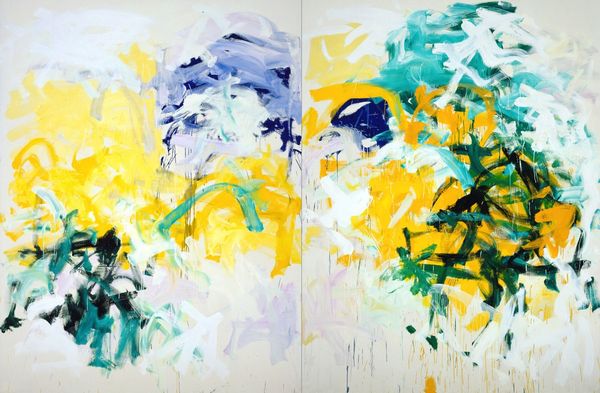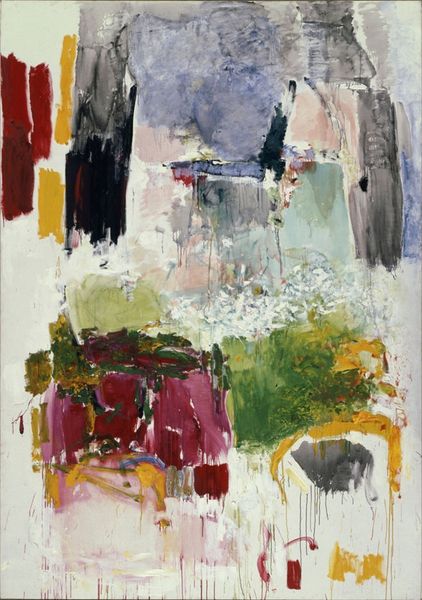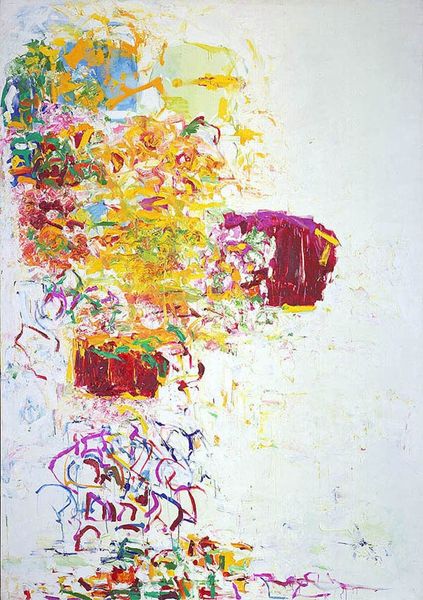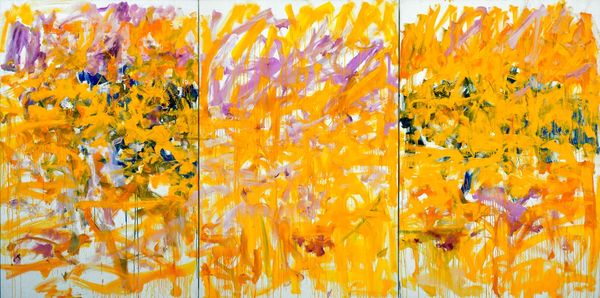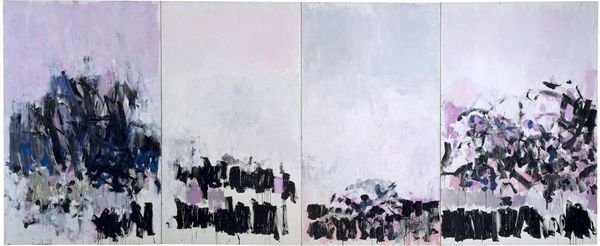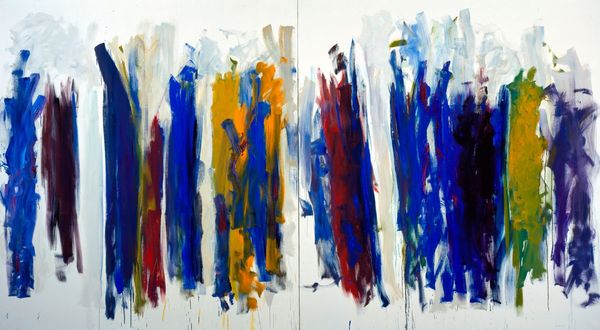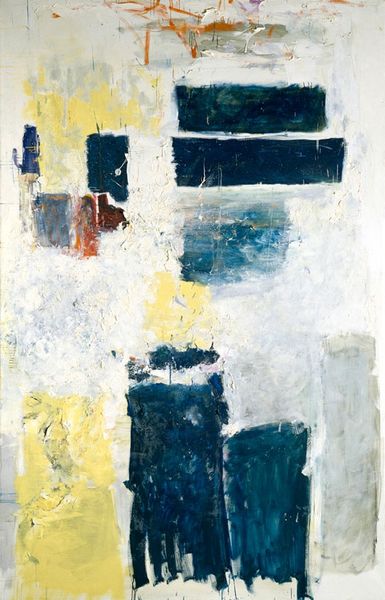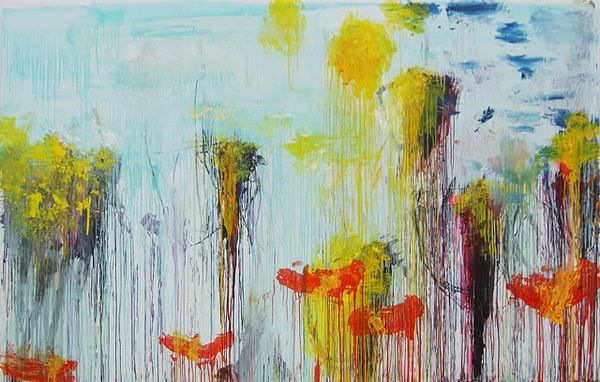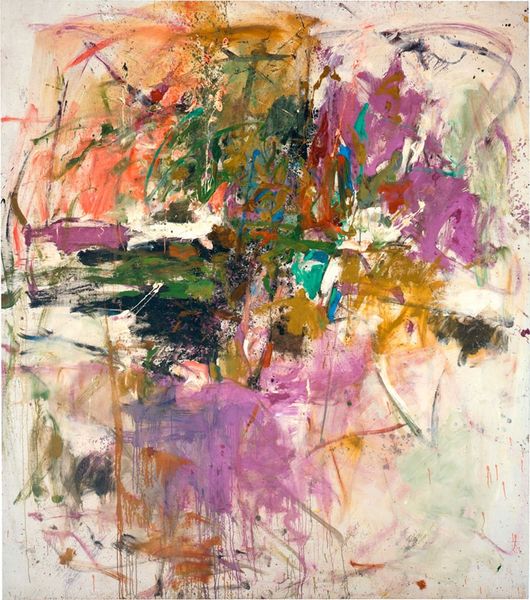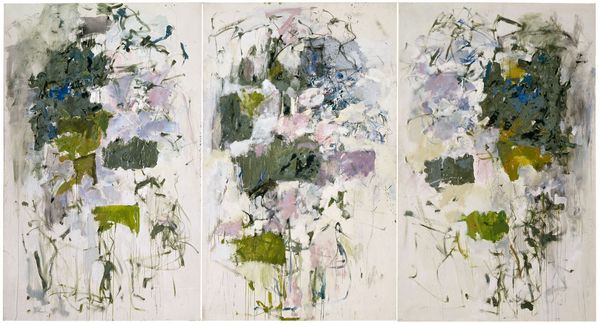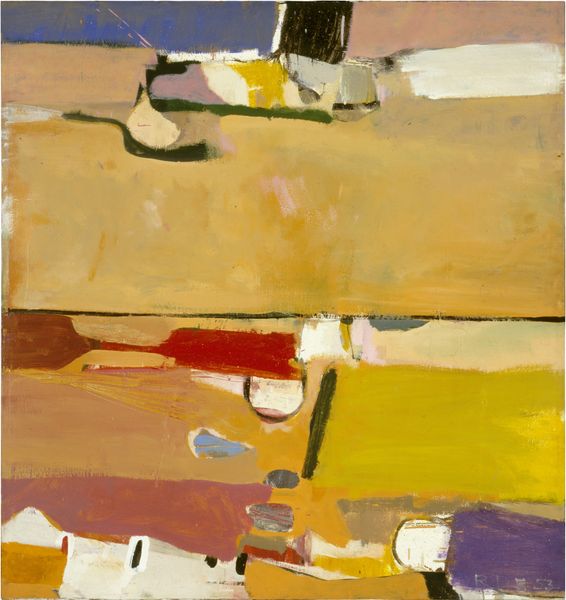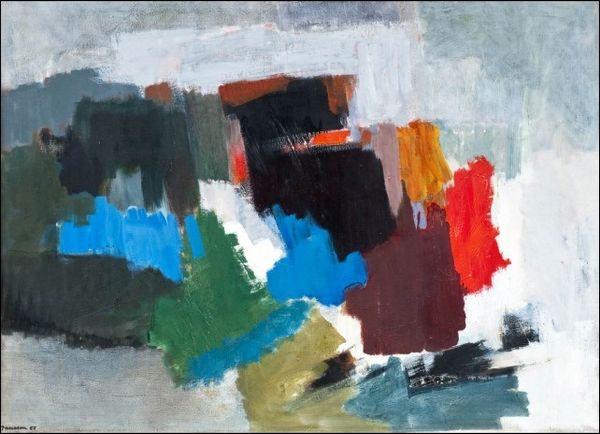
Copyright: Joan Mitchell,Fair Use
Editor: Here we have Joan Mitchell's monumental four-panel piece, "Salut Tom," painted in 1979 using acrylic on canvas. The scale is breathtaking! I'm struck by how the bright yellows and blues fight against those somber dark greens and blacks. What's your interpretation of this dynamic? Curator: This isn’t just a dynamic interplay of colors; it’s a charged landscape reflecting Mitchell’s emotional state and relationship to the world. "Salut Tom" is an homage to her late friend, a painter named Tom Hess. Knowing that, how does your perception of those seemingly warring colours shift? Editor: I guess knowing it's a tribute, the push and pull feels more... personal? Like a dialogue, maybe even grief? But why such vibrancy with loss? Curator: Precisely. It is important to contextualise it within the broader feminist art movement. Many female artists in that period fought to express their emotional and subjective experiences. Grief isn't monolithic; it can encompass joy, anger, and remembrance. This boldness rejects societal expectations of feminine grief, and Mitchell reclaims her agency. Consider, for instance, how the four panels almost segment stages of grief, wouldn't you say? Editor: I can see that— almost like acts in a play. So, you’re saying this work challenges the patriarchy and explores the complexities of feminine expression through abstract language? Curator: Absolutely. And consider the title itself. “Salut” is French for “hello” but also implies a farewell. It is about the push and pull that you identified initially and the intersection of life, death, joy and despair that is uniquely feminine in the 20th Century. Editor: Wow, I had no idea so much was happening beneath the surface of the paint. I’ll never see abstract art the same way again! Curator: That's the power of art when viewed through multiple lenses; it reveals untold stories!
Comments
No comments
Be the first to comment and join the conversation on the ultimate creative platform.
